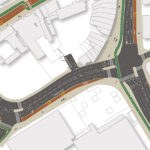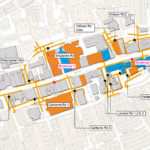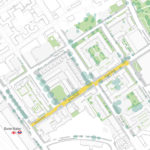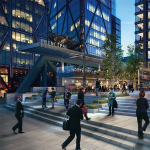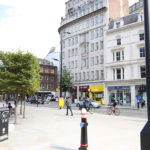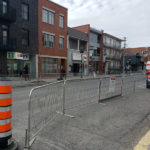There have been many road space reallocation or “Streetspace” schemes in London boroughs as a result of the Department for Transport’s Emergency Active Travel Fund (EATF) to respond to COVID-19. Some have attracted more attention than others. Some have been deemed successful and others not. Some have been removed due to vociferous local opposition.
Lewisham Council opted to reduce their low traffic neighbourhoods (LTNs) in Lewisham and Lee Green, due to local opposition. Wandsworth suspended all its trial LTNs and stated that they were not delivering the benefits they wish to see and were also affecting emergency access and traffic flows.
When large-scale road space reallocation schemes are implemented there are often knock-on effects, such as displaced traffic or lower-than-anticipated usage of new cycle lanes or pedestrian space. There will also almost always be opposition where traffic routes become more convoluted or the measures cause congestion. It usually takes about 6 months for traffic patterns to settle down and for people to adjust their journey patterns or change their mode of transport.
The scale of the backlash against some of these measures may be due to the scale of the proposals implemented, or to do with the fact that in the first lockdown people were initially advised to make essential journeys by car rather than public transport, which was then made more difficult by the Streetspace schemes. Most likely it was due to people’s frustration with the overall impact of COVID-19 on their lives.
These schemes were implemented on a trial or experimental basis so they could be monitored, reviewed, and retained, amended or removed. If some of these schemes had been given more time and politicians had held their nerve against the opposition, I wonder if they may have still been in place now, helping to reduce motor traffic speeds and volumes and improving air quality, with the associated climate and health benefits, during lockdown 3?
Continuing in the face of opposition
Other London local authorities have continued despite opposition. Lambeth Council has stood firm on its LTNs and believes the protesters are a minority. Croydon and Ealing have faced legal challenges on some of their low traffic neighbourhoods. Islington has amended some schemes to improve local access but is continuing to implement further schemes despite marches, demonstrations and vandalism of signs and planters.
Camden is prefacing its public consultations on LTNs with the statement that 69% of households in the borough do not own a car and – that due to public transport capacity remaining much lower than before the pandemic – safe and easy walking, cycling and scooting routes are more important than ever. This statement highlights up front that those car drivers that complain about any measures implemented are either in the minority of residents or living outside the borough.
Hackney has assessed TfL traffic counts to show that LTNs have not caused a rise in main road traffic, despite opposition and protests from people concerned about the knock-on effect of traffic as well as access issues and the lack of prior consultation.
Consultation is key
Many of the arguments against LTNs have suggested that new schemes have been set up undemocratically and without consultation. Or that they disadvantage car drivers and disproportionately benefit more privileged communities. It’s also important to remember that in some communities, and for some users (particularly outside city centres), cars and other motorised vehicles are essential for people and businesses to go about their daily lives. It’s these types of situations where we might wish to look at alternative solutions to LTNs, whilst still striving for overall improvements.
The issue of lack of consultation on schemes has now been addressed by the Department for Transport’s amended guidance issued in November 2020 on the importance of engaging and consulting with local communities and stakeholders prior to implementation from January 2021 onwards.
Meeting a London-wide need
According to the London Cycling Campaign, by November 2020, London’s Streetspace programme had already resulted in 90km of cycle lanes, nearly 100 LTNs, over 80km of bus lane becoming 24/7 and over 300 new school streets. More schemes will be delivered following the second round of funding announced by the DfT in November 2020.
If the mayor is to achieve his ambitious targets on road safety and emissions, there remains a need for improved walking and cycling facilities in London, as well as a reduction in the number of non-essential motor vehicle journeys. TfL’s latest Travel in London report states that the proportion of journeys made by walking and cycling increased significantly from 29% (between January and March 2020) to an estimated 46% (between April and June 2020); the proportion of journeys by private (motorised) transport rose from 38% to 45% over the same period.
Whether or not these trial and experimental Streetspace schemes have been amended, reduced or removed completely, local authorities should be praised for putting them in on such a large scale. They have risen to the challenge and, despite some schemes being removed or reduced, what they have achieved in a few months is more than would be achieved in several years in normal circumstances.
